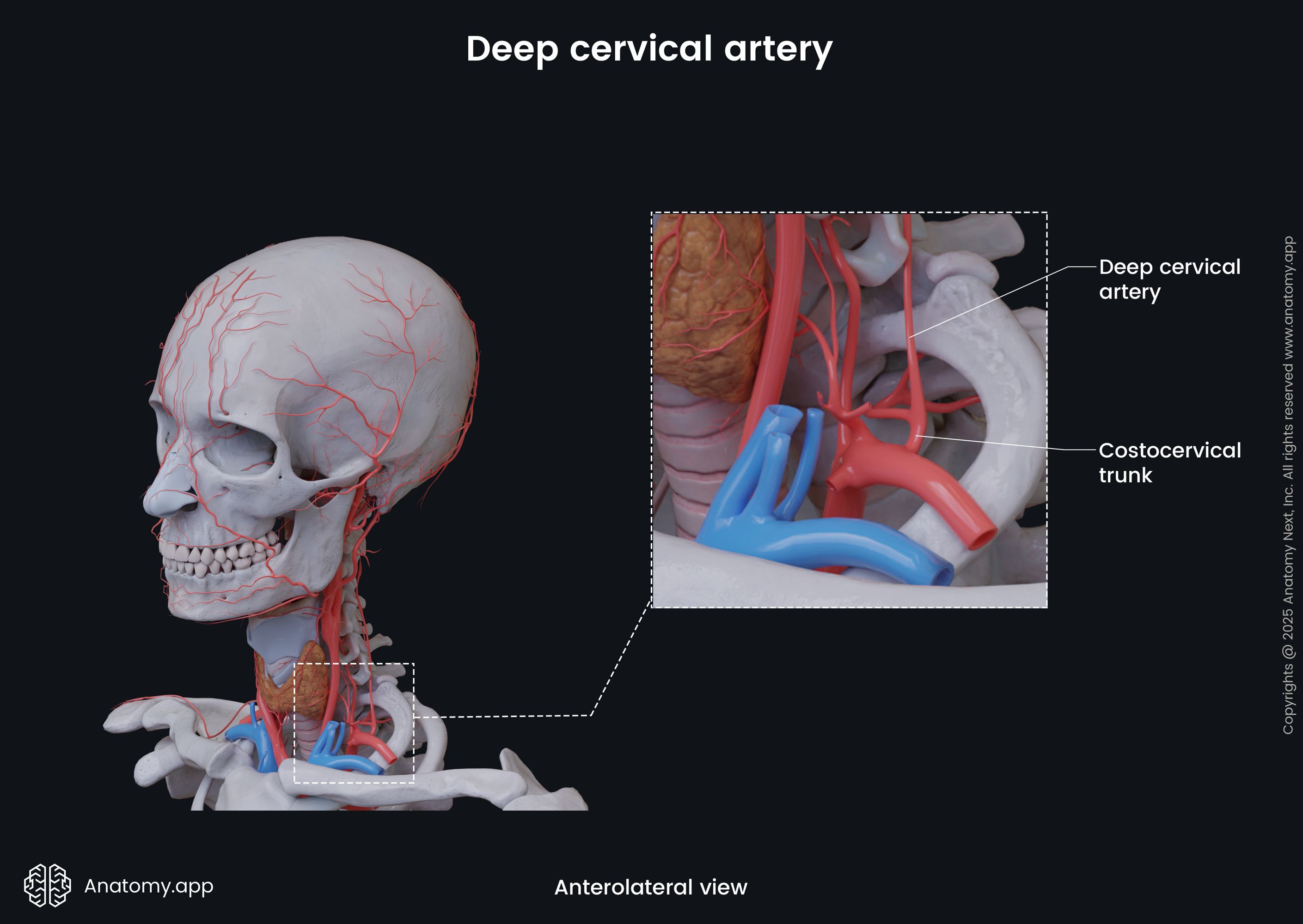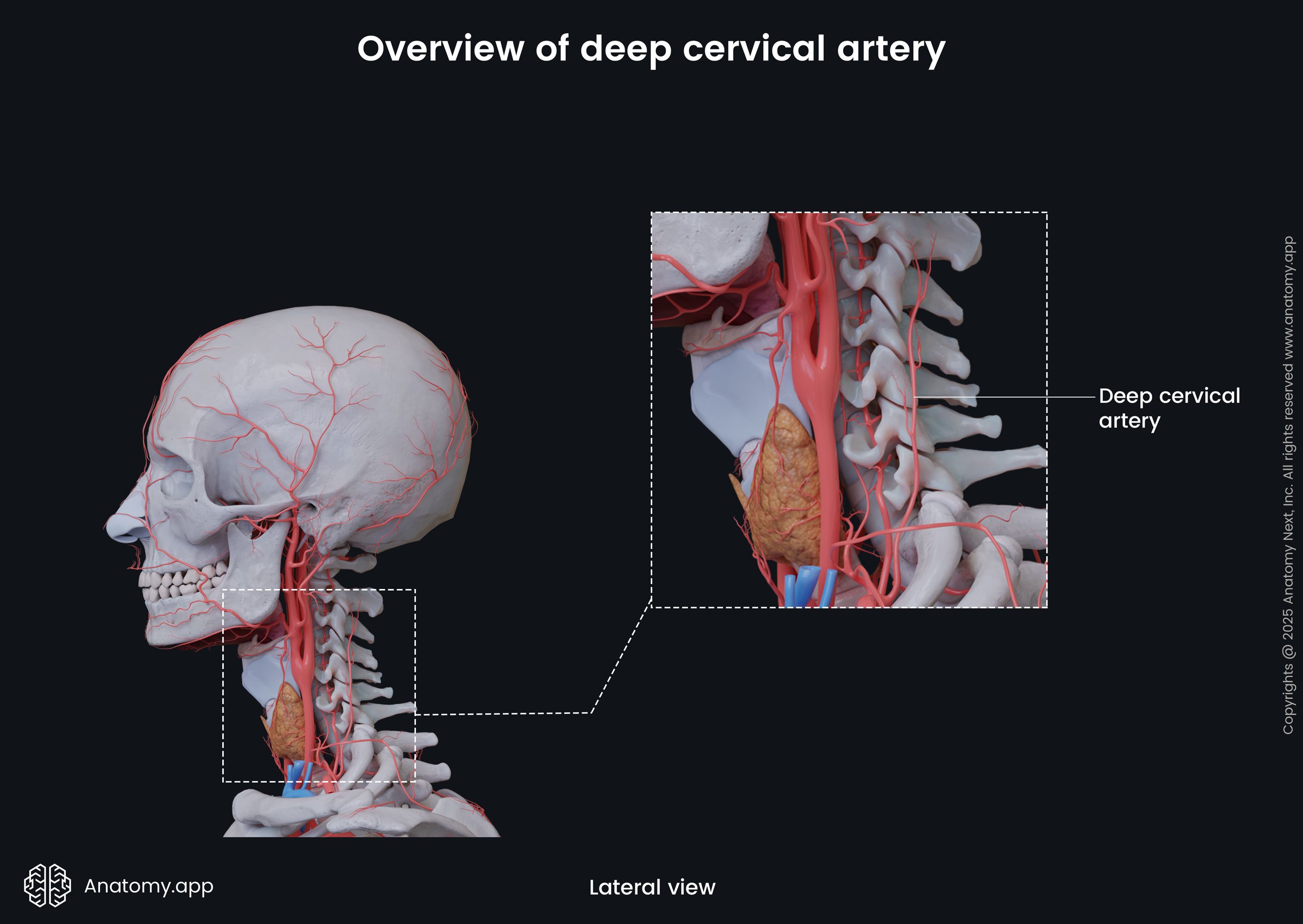- Anatomical terminology
- Skeletal system
- Joints
- Muscles
- Heart
- Blood vessels
- Blood vessels of systemic circulation
- Aorta
- Blood vessels of head and neck
- Arteries of head and neck
- Veins of head and neck
- Blood vessels of upper limb
- Blood vessels of thorax
- Blood vessels of abdomen
- Blood vessels of pelvis and lower limb
- Blood vessels of systemic circulation
- Lymphatic system
- Nervous system
- Respiratory system
- Digestive system
- Urinary system
- Female reproductive system
- Male reproductive system
- Endocrine glands
- Eye
- Ear
Deep cervical artery
The deep cervical artery (Latin: arteria cervicalis profunda) is a branch of the costocervical trunk that supplies tissue in the neck region. The deep cervical artery passes posteriorly above the 8th cervical spinal nerve between the transverse process of the seventh cervical vertebra (C7) and then ascends to the deep muscles of the neck and back.


In the neck, the deep cervical artery gives off several spinal branches that supply the spinal cord in the neck region, as well as muscular branches to supply the deep muscles in the neck and upper back. To sum up, the deep cervical artery supplies deep muscles of the neck and upper back, as well as the cervical part of the spinal cord.